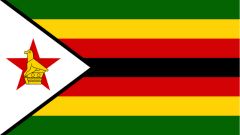Zimbabwe For Kids
-
Geographical Location: Zimbabwe is a landlocked country located in southern Africa. It shares borders with South Africa to the south, Botswana to the west and southwest, Mozambique to the east and northeast, and Zambia to the northwest.
-
Capital and Largest City: The capital city of Zimbabwe is Harare. It serves as the administrative, political, and economic center of the country.
-
Independence: Zimbabwe gained its independence from British colonial rule on April 18, 1980. Previously known as Rhodesia, it became the Republic of Zimbabwe upon independence.
-
Great Zimbabwe: The country’s name, Zimbabwe, is derived from the ancient city of Great Zimbabwe, which was a medieval city and an important trading center in Southern Africa. The ruins of Great Zimbabwe are a UNESCO World Heritage Site and a symbol of national pride.
-
Languages: Zimbabwe has 16 official languages, with the most widely spoken being English, Shona, and Ndebele. Shona is the most common language spoken by the majority of the population.
-
Government: Zimbabwe operates as a presidential republic. The President is both the head of state and the head of government. The country has a bicameral parliament consisting of the National Assembly and the Senate.
-
Economy: Zimbabwe’s economy is diverse, with agriculture, mining, manufacturing, and services being key sectors. The country was once known as the “breadbasket of Africa” due to its agricultural productivity, particularly in tobacco and maize. However, economic challenges, including hyperinflation and political instability, have impacted its economic growth.
-
Victoria Falls: One of the most famous natural attractions in Zimbabwe is Victoria Falls. Located on the Zambezi River, it is one of the largest and most spectacular waterfalls in the world. It is a UNESCO World Heritage Site and attracts tourists from around the globe.
-
Wildlife and National Parks: Zimbabwe is home to a diverse range of wildlife and boasts several national parks and game reserves. Hwange National Park is the largest park in Zimbabwe, known for its abundant elephant population. Mana Pools National Park, Matobo National Park, and Gonarezhou National Park are also popular destinations for wildlife enthusiasts.
-
Cultural Heritage: Zimbabwe has a rich cultural heritage, with vibrant music, dance, and art forms. The country is known for its traditional mbira music, stone sculptures, and intricate beadwork. Traditional ceremonies and rituals, such as the Shona and Ndebele ceremonies, showcase the cultural diversity of the country.
-
Great Zimbabwe Dollar: Zimbabwe once had its currency, the Zimbabwean dollar. However, due to hyperinflation, the currency became virtually worthless, and in 2009, it was abandoned, and the country adopted a multi-currency system, primarily using the US dollar and South African rand.

